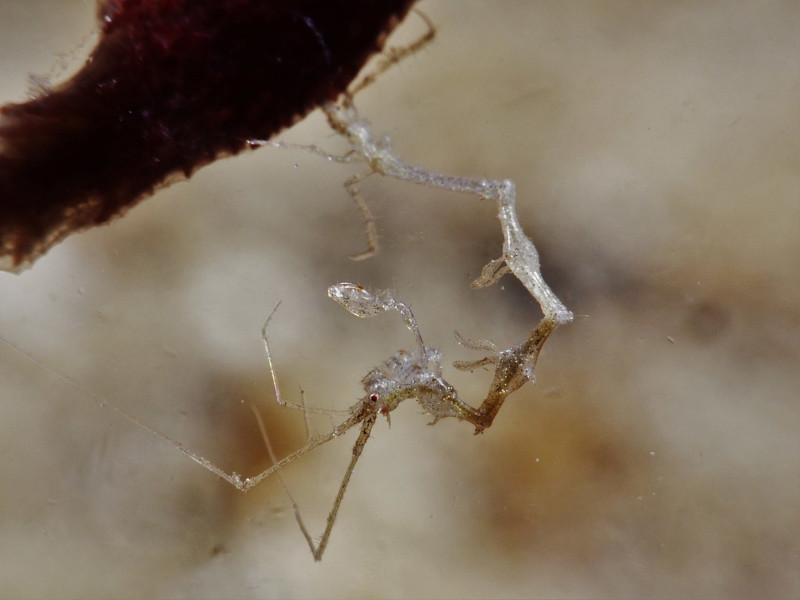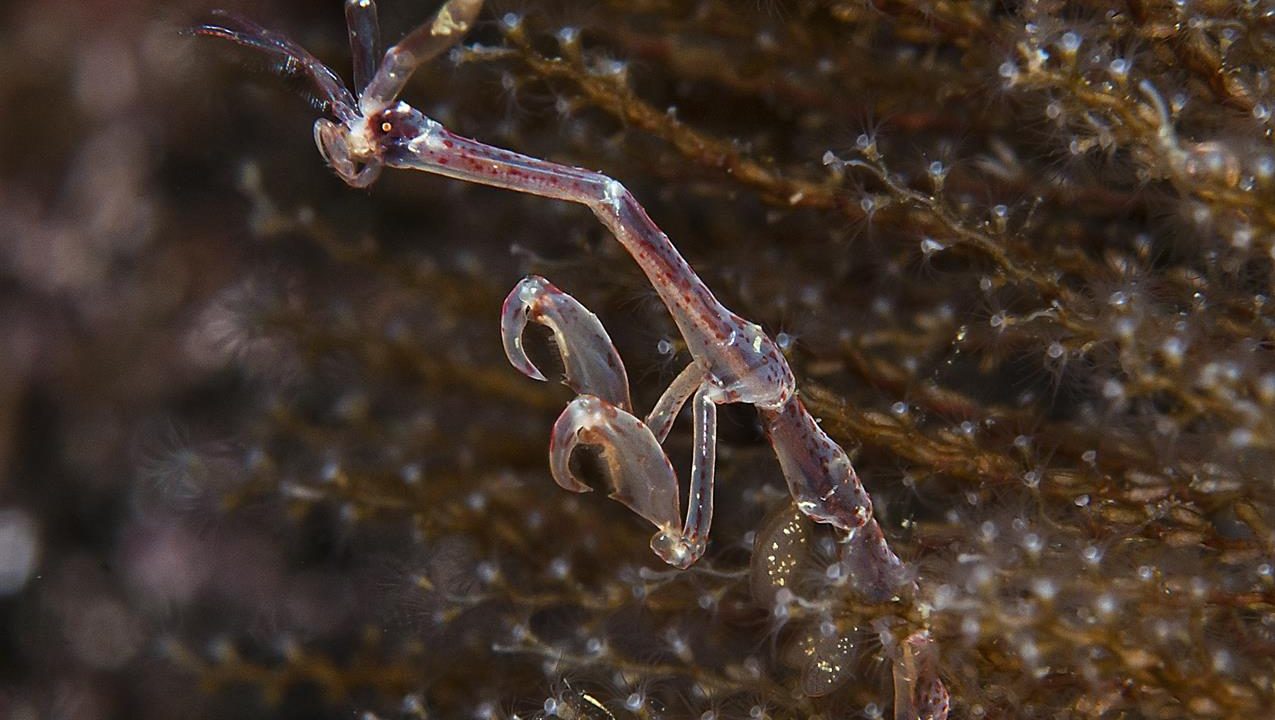Spooky scary skeleton shrimp, send shivers down your spine, their appearance will shock your soul, but certainly don’t seal your doom tonight!
Family Caprellidea, otherwise known as skeleton shrimp, are small marine arthropods that are found world-wide. Using their specialized ‘feet’, called pereopods, these slender, segmented invertebrates cling to sea grasses, kelps, and other intertidal structures, feeding on other small marine invertebrates, such as diatoms, protozoans, and crustacean larvae. With their slender body structure helping them to almost disappear, many are stealth predators, that actively hunt for prey. Other species silently and motionlessly wait to capture prey as it passes.

The first two, disproportionately large pereopods (i.e., gnathopods), which resemble cat or raptor claws, are used for locomotion and mating. Because their feet are specialized to latch, rather than swim, caprellids move by grasping substrates with their gnathopods and pulling their bodies forward (like an inchworms). While not impactful to humans, a poison pouch, hidden in the large segment of the gnathopod, effectively turns their claw into a poison dagger, that is used during fights between males. These fights sometimes end up sealing the corporeal doom of some males, as they can be deadly.
Despite their eerie appearance, Caprellidae are integral to ecosystem health, contributing consistent maintenance of their environments (e.g., not letting diatom populations overwhelm the sea grasses and kelps) and nutrition to other fish and invertebrates including nudibranchs, shrimp, and perch.
![]()

They remind me of Preying Mantis!